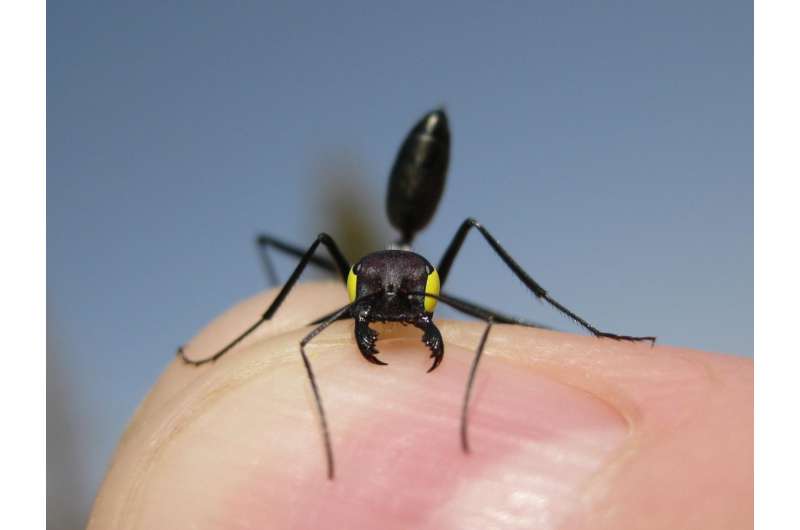September 9, 2016 report
Desert ants found to have dual navigation systems

(Phys.org)—A pair of researchers with Ulm University has found that a type of African desert ant has two navigational systems for helping it find its way back to the nest. In their paper published in the journal Science, Sarah Pfeffer and Matthias Wittlinger describe experiments they conducted with the ants and what they learned in doing so.
Prior research with Cataglyphis bi-color desert ants initially suggested that they found their way back to their nests using optic flow—where they observe the passing terrain as they travel as a means of gauging distance. But a more recent study found that the ants actually counted their steps to keep track of how far they had gone. Getting back to the nest from foraging trips in short order is critical for the ants because the intense desert heat will kill them if they take too long. In this new effort, the research pair has found that the ants actually have both types of navigational skills at their disposal.
To learn more about what is actually going on with the ants, the team noted that interior colony ants—those that perform housekeeping rather than forage—were actually carried by foragers when it was time to move to a different nest. But what would happen if something happened to the forager during the trip—would the interior ant be able to find its way back to the nest, and if so, how?
Logically, the ants being carried would have difficulty counting steps because they were not taking any. But testing showed that if an interior ant lost its host during a journey to a new site, it was able to find its way back home anyway. To find out if it was using optic flow, the researchers applied yellow paint over the eyes of several volunteers, blinding them. Such ants would either have to rely on counted steps to get back home, or they would not be able to do so at all. After several trials the researchers found the latter to be the case—without their eyes to guide them, the ants wandered lost; thus their navigation was based on optic flow, which meant the ants have a dual navigation system to help them survive.
More information: S. E. Pfeffer et al. Optic flow odometry operates independently of stride integration in carried ants, Science (2016). DOI: 10.1126/science.aaf9754
Abstract
Cataglyphis desert ants are impressive navigators. When the foragers roam the desert, they employ path integration. For these ants, distance estimation is one key challenge. Distance information was thought to be provided by optic flow (OF)—that is, image motion experienced during travel—but this idea was abandoned when stride integration was discovered as an odometer mechanism in ants. We show that ants transported by nest mates are capable of measuring travel distance exclusively by the use of OF cues. Furthermore, we demonstrate that the information gained from the optic flowmeter cannot be transferred to the stride integrator. Our results suggest a dual information channel that allows the ants to measure distances by strides and OF cues, although both systems operate independently and in a redundant manner.
Journal information: Science
© 2016 Phys.org



















